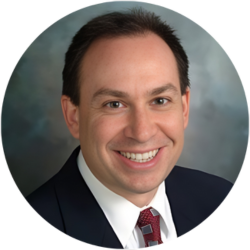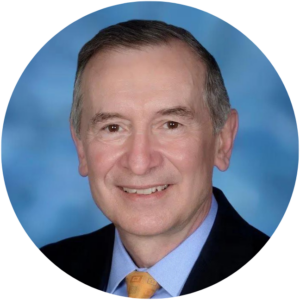On the Money
This edition of Locums CME focuses on the intersection of economic factors and career planning in healthcare. AMN Healthcare’s report highlights the variable earnings across medical specialties, providing a crucial lens on financial prospects for physicians. Accompanying this, we discuss strategic tax planning for high earners, essential for optimizing financial outcomes in the medical profession.
Meanwhile, we delve into career flexibility through locum tenens, particularly beneficial for late-career physicians seeking new opportunities without the commitment to permanent roles. Additionally, the AAMC’s latest findings on the physician shortage emphasize the urgent need for strategic adjustments in residency programs and collective bargaining, signaling significant upcoming shifts in the healthcare workforce.
AMN Healthcare Unpacks Variables Shaping Earnings Across Specialties
In its 2024 report, AMN Healthcare examined the factors influencing physician salaries by reviewing how specialty demand, geographic location, and experience level might influence a physician’s pay.
According to AMN, orthopedic surgeons and oncologists command higher salaries than specialties like primary care, mostly due to the complexity of their work and patients’ needs.
The report showed that practice location can also affect physicians’ earning potential due to the differing cost of living, state economy, and local market conditions. As physicians evaluate compensation packages, they should consider that coastal and metropolitan areas typically offer higher salaries to offset higher living expenses, AMN states.
AMN presented average starting salary trends in 2024 for 10 specialties:
- Orthopedic Surgery: $633,000
- Urology: $540,000
- Gastroenterology: $506,000
- Radiology: $472,000
- Anesthesiology: $450,000
- Hematology/Oncology: $440,000
- Cardiology: $433,000
- Dermatology: $427,000
- Pulmonology: $418,000
- Obstetrics/Gynecology: $367,000
AMN advises physicians to review the Bureau of Labor Statistics and other industry reports before negotiating contracts. Locumpedia also created a resource guide with valuable tips to help physicians negotiate salaries and better understand locum contracts.
Your Locums Prescription
Essential Checklist for Your First Locum Tenens Assignment
Embarking on your first locum tenens assignment can be exciting and nerve-wracking, but proper preparation can help ease the transition. Barton Associates created a checklist for healthcare professionals entering new locum tenens roles.
Key documents Barton included in its checklist:
- Medical and DEA licenses
- Various certifications (BLS, ACLS, PALS)
- Personal identification
- Relevant health documents (ie: vaccination records)
Additionally, Barton advised providers to prepare their bank information for payroll purposes. The checklist also extends to include practical items that ensure a provider is comfortable on the first day, like food, specialty medical equipment, a notepad and pen to jot down questions, spare chargers to make sure they stay connected, and extra clothing for any unexpected spills or weather changes.
How Locum Tenens Can Benefit Late-Career Physicians
Locum tenens work offers strategic opportunities for seasoned physicians wanting the flexibility to ease into retirement. The locum working arrangement offers the ideal blend of autonomy, travel, and the chance to serve in underserved areas. It also provides a unique way for them to evaluate potential retirement locations.
The appeal of locum tenens for retiring physicians stems from factors like the desire to escape the administrative burdens of hospital systems or large group practices and the yearning for the autonomy once enjoyed in smaller practices. Locum tenens roles can accommodate work preferences, from full-time inpatient to part-time outpatient work, allowing retired or semi-retired doctors to tailor their workload to fit their lifestyle. The flexibility of locum tenens can reignite a physician’s passion for medicine, enabling them to maintain a broad general practice while staying current with their medical skills and providing valuable services in underserved regions.
Physician Wellness Retreat
KevinMD Podcast: Revitalizing Primary Care With Innovative Solutions to Combat Burnout


William E. Fox, chair-elect of the ACP Board of Regents, joined KevinMD’s Dr. Kevin Pho to spotlight the burgeoning crisis of physician workforce shortages in primary care. In the KevinMD podcast episode, Fox discussed waning interest among medical students to take on primary care careers, which he says was driven by challenges like low reimbursement rates and daunting administrative burdens. Their conversation, set against the backdrop of the American College of Physicians, dove into potential solutions to mitigate these issues and secure the future of primary care.
Doctor’s Notes
Survey Shows No Significant Difference in Financial Health of Rural vs. Urban Hospitals
A standard narrative suggests rural hospitals are financially worse off than their urban counterparts. A recent Kaufman Hall report revealed that there is no significant difference in average operating margins in the collective financial health assessment of rural and urban hospitals. This finding disrupts the prevailing assumption that rural hospitals have inferior financial performance. Instead, both rural and urban hospitals experience similar economic challenges and successes.
The report also highlighted a critical disparity at the lower end of the performance spectrum, where the poorest performing rural hospitals exhibit “much lower” margins than their urban counterparts, showing the financial distress some rural healthcare institutions face. There are also examples of rural hospitals achieving remarkable financial turnarounds. These successes, juxtaposed with the broader financial struggles of the healthcare sector, show the complex economic realities hospitals face irrespective of their geographic location.
The Critical Need for Leadership Training in Healthcare

Dr. Moores said not recognizing and developing leadership skills among practicing physicians is an oversight that can directly impact healthcare outcomes. He said there’s a narrative that leadership only equates to high-ranking titles, which fails to acknowledge physicians’ day-to-day leadership roles, from operating rooms to emergency departments, where immediate decisions can save lives. There’s a gap in perception that results in a missed opportunity for leadership development in providers who are in constant, direct contact with patients and healthcare teams.
Dr. Moores said the lack of formal leadership training for physicians contributes to this gap, with most medical professionals not exposed to leadership theories or principles until they ascend to formal management roles. This neglect overlooks frontline physicians’ influence on team dynamics, patient safety, and overall healthcare delivery. Effective leadership behaviors and styles can significantly improve team performance and patient outcomes, but many physicians default to a singular leadership style because they lack training. Recognizing someone as a leader can spur a virtuous cycle of self-improvement and better team dynamics, Moores said.
Tax-Savvy Strategies for High-Earning Physicians
Physicians have high earning potential and often grapple with a hefty tax burden. Strategic financial maneuvers can alleviate some of this fiscal pressure. MDLinx offers a myriad of ways physicians can optimize their tax situation and highlights key strategies that lead to significant savings and financial growth over time.
High-Income Tax Implications: Physicians’ salaries place them in higher tax brackets, making them ineligible for many deductions and credits available to lower earners.
Underutilized Pre-Tax Contributions: Maximizing contributions to pre-tax retirement accounts is a fundamental strategy for reducing taxable income.
Neglecting Tax-Efficient Accounts: Beyond retirement savings, exploiting HSAs, FSAs, and 457b plans can offer substantial tax relief.
Tax Impact of Family Status: Marital and parental statuses significantly affect tax rates, with married filing jointly and having dependents offering potential tax benefits.
Homeownership Advantages: Owning a home allows physicians to deduct mortgage interest, a substantial tax break not available to renters.
Charitable Contributions: Smart giving strategies, including the timing and method of donations, can optimize tax deductions for charitable efforts.
Side Income and Tax Burden: Earnings from side jobs require careful tax planning to manage higher tax rates and self-employment taxes effectively.
AAMC Updates Physician Shortage Prediction, Highlights Significant Gap in Primary Care
The Association of American Medical Colleges (AAMC) issued a new report warning that the United States could face a physician shortage of up to 86,000 by 2036. While this is an improvement over a 2021 analysis that predicted a shortage surpassing 120,000 by 2034, the AAMC’s updated estimates highlight a significant gap, particularly noting a potential shortage of 20,200-40,400 primary care physicians and 10,100-19,900 surgical specialists.

The AAMC called for sustained and increased funding in graduate medical education from Congress to prevent these projections from worsening. Despite a nearly 40% increase in medical school enrollment since 2002 and a significant number of applicants in 2023, the AAMC stressed the importance of drawing a more diverse pool of students and addressing physician burnout to maintain a robust healthcare workforce.
How Collective Bargaining Shapes the Future of Residency

Beyond financial compensation, collective bargaining impacts medical residents’ well-being and job satisfaction. Through her involvement with CIR, Isaacs has helped broaden UCLA’s “Medi-Cal”—California’s Medicaid healthcare program—patient population and tackled structural issues within the hospital system that individual leadership might never address. Her experiences illustrate the broader implications of union membership, from securing substantial contracts to fostering a collaborative environment where residents can advocate for meaningful change.








